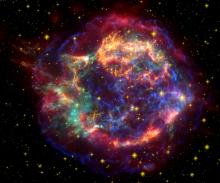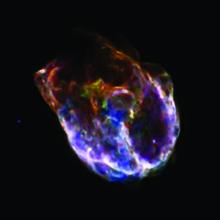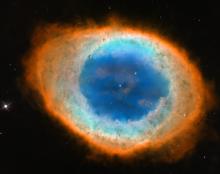Listen to today's episode of StarDate on the web the same day it airs in high-quality streaming audio without any extra ads or announcements. Choose a $8 one-month pass, or listen every day for a year for just $30.
You are here
Rare Earths
A mine in California holds the residue of collisions between dead stars. So do even bigger mines in China. The stellar “ash” consists of a set of chemical elements that are used to forge key parts of modern technology — from cell phones to batteries for electric cars.
They’re known as rare-earth elements. Some are born inside stars similar to the Sun that have reached the ends of their lives. A slow “drip” of neutrons builds up heavier elements, which are expelled into space when the stars die.
But most rare-earth elements are born in collisions between neutron stars — the tiny, ultra-dense corpses of once-massive stars. The impacts produce the extremely high temperatures needed to forge heavy elements — not just rare earths, but gold, silver, and similar elements as well. As they scatter through space, these elements may be incorporated into planets — like the newly forming Earth.
Despite their name, rare-earth elements are fairly common in Earth’s crust. But they don’t clump together — they’re sprinkled through the crust like bits of coconut on top of a cake. So it’s rare to find high concentrations of them.
Yet rare earths are critical ingredients in modern technology. They’re used in lighting fixtures, fighter jets, medical equipment, televisions, wind turbines, and much more. So the next time you use your cell phone or turn on an LED lamp, keep in mind that some of its raw materials were forged in the collisions of dead stars.
Script by Damond Benningfield






